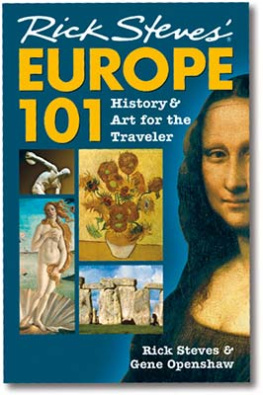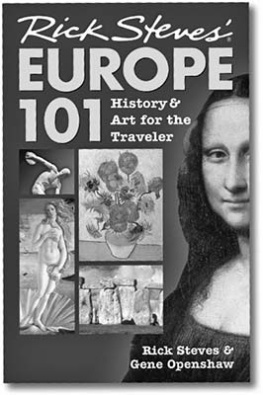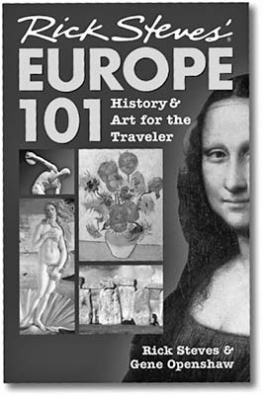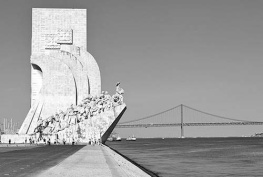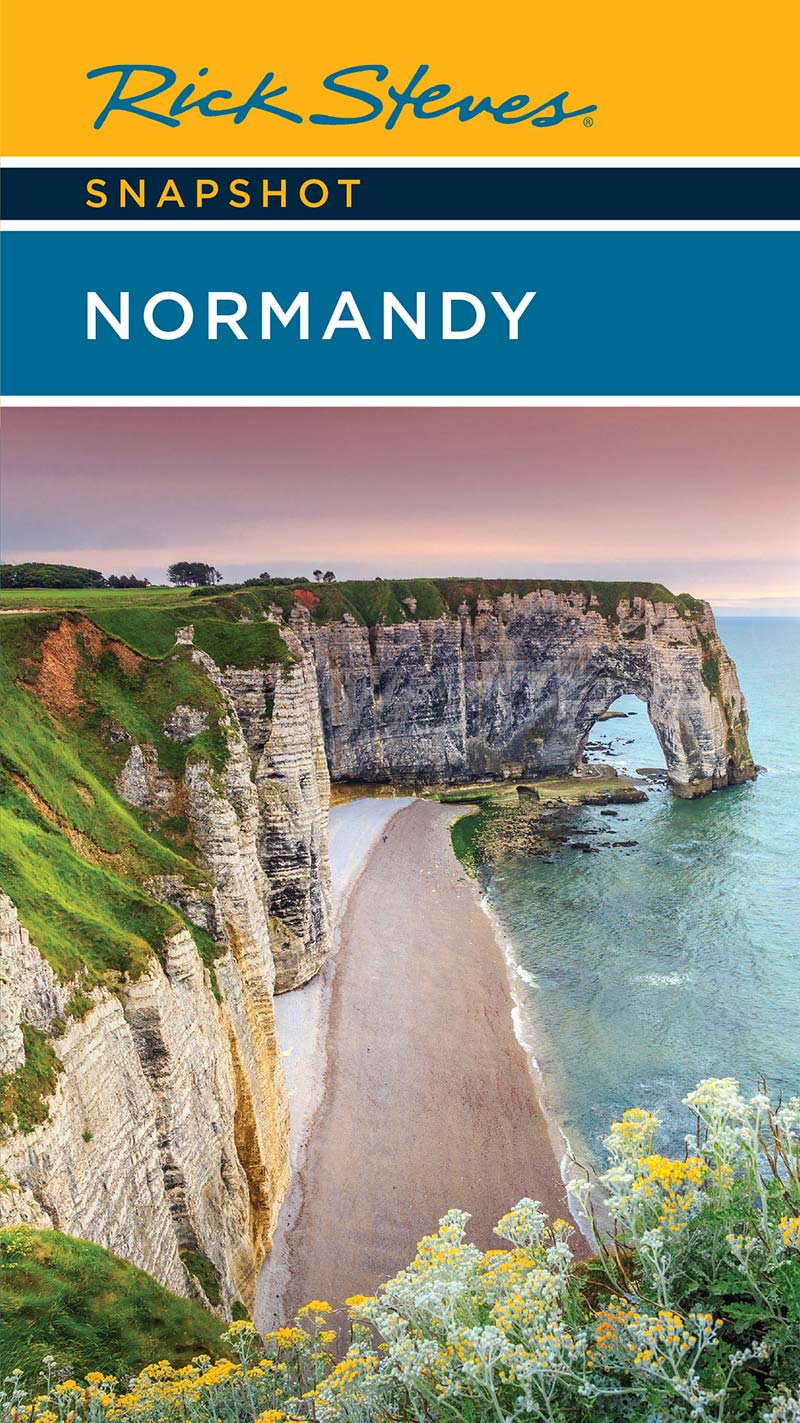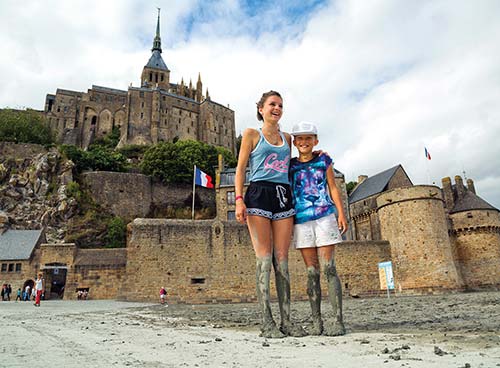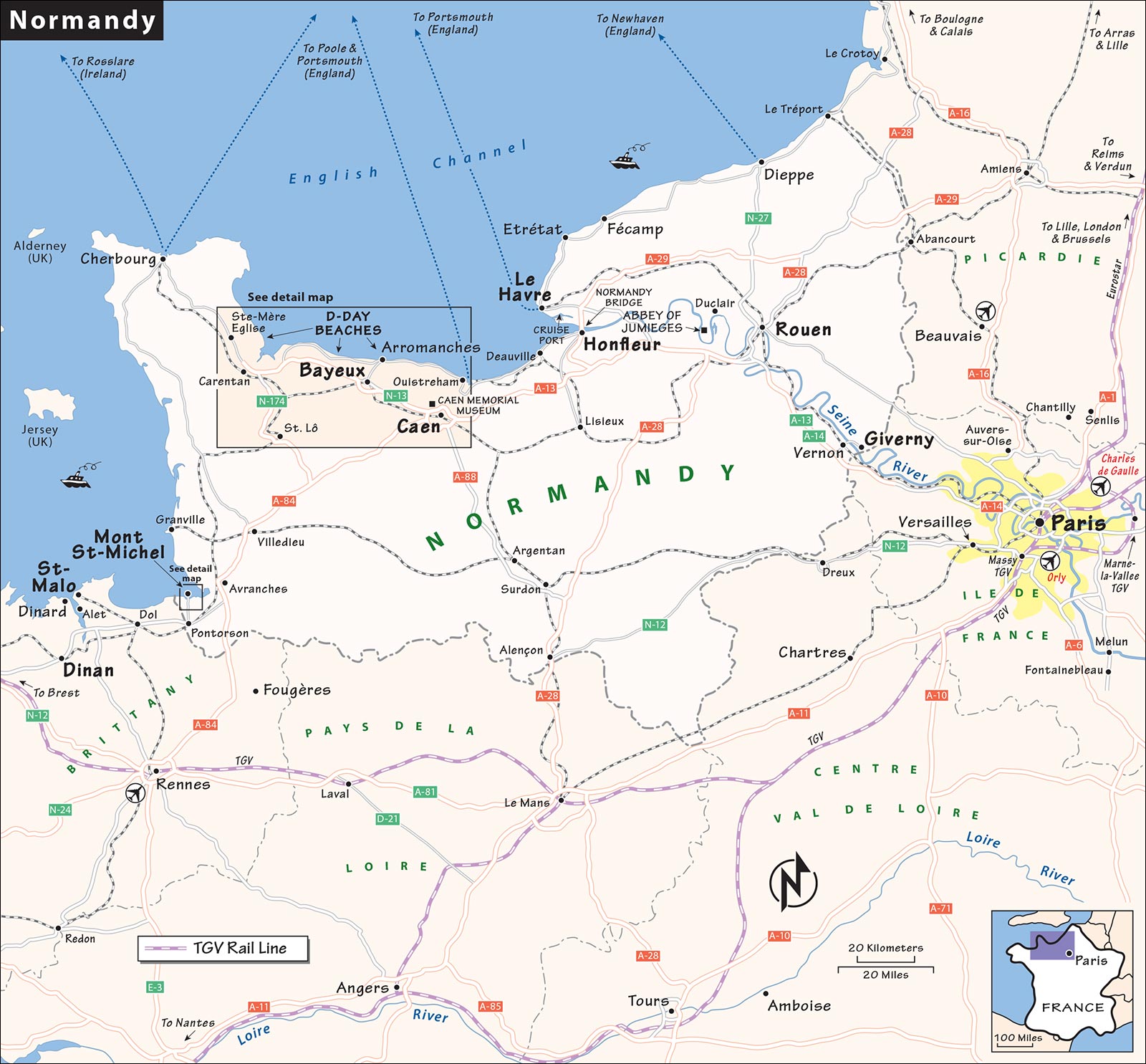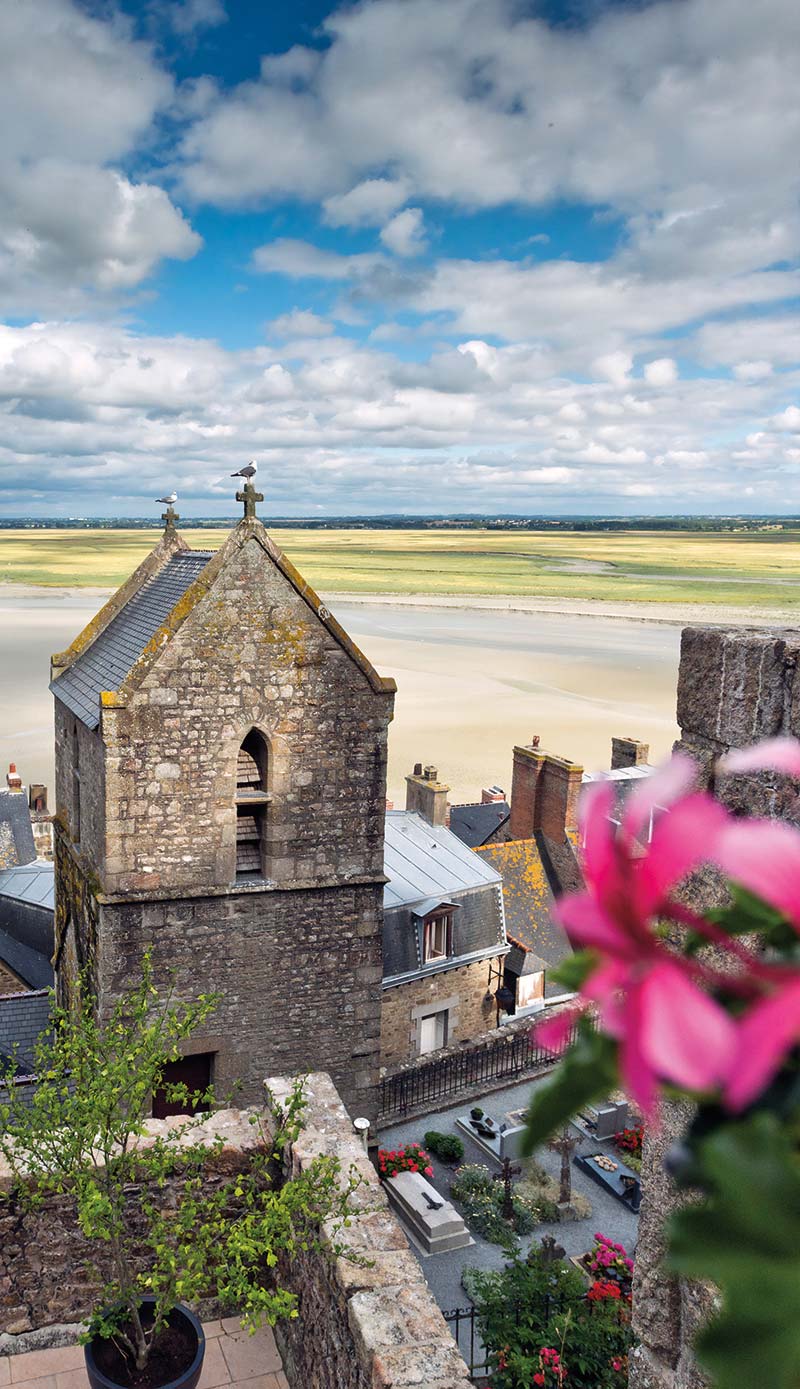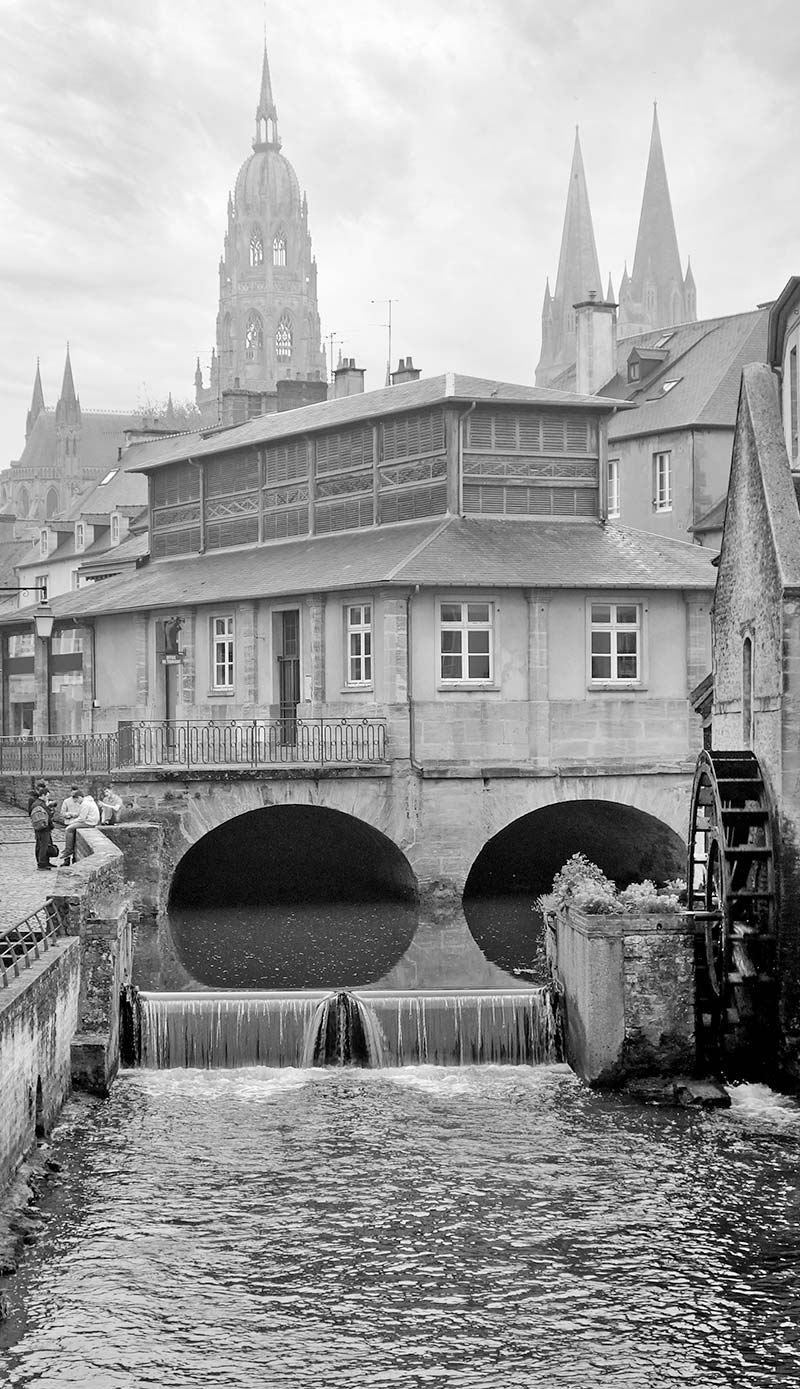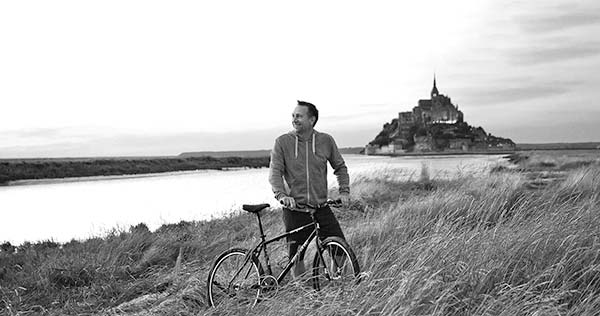Contents
Contents
Rick Steves
SNAPSHOT
Normandy
This Snapshot guide, excerpted from my guidebook Rick Steves France, focuses on Normandya fascinating region offering a pastoral mix of sweeping coastlines, half-timbered towns, and intriguing cities. Legendary figures such as the Vikings, William the Conqueror, Joan of Arc, and General Dwight D. Eisenhower have made history here. But Normandy is more than invasions and D-Day beaches. Honfleurs gentle harbor inspired the Impressionists, as did Rouens magnificent cathedral. A thousand-year-old tapestry in Bayeux captures the drama of medieval warfare in a million stitches. On your journey, discover the architecturaland spiritualmarvel of Mont St. Michel, rising above the tidal flats like a mirage.
To help you have the best trip possible, Ive included the following topics in this book:
Planning Your Time, with advice on how to make the most of your limited time
Orientation, including tourist information (abbreviated as TI), tips on public transportation, local tour options, and helpful hints
Sights, with ratings and strategies for meaningful and efficient visits
Sleeping and Eating, with good-value recommendations in every price range
Connections, with tips on trains, buses, and driving
Practicalities, near the end of this book, has information on money, staying connected, hotel reservations, transportation, and other helpful hints, plus French survival phrases.
To travel smartly, read this little book in its entirety before you go. Its my hope that this guide will make your trip more meaningful and rewarding. Traveling like a temporary local, youll get the absolute most out of every mile, minute, and dollar.
Bon voyage! Happy travels!
Rouen Honfleur Bayeux D-Day Beaches Mont St-Michel
Sweeping coastlines, half-timbered towns, and thatched roofs decorate the rolling green hills of Normandy (Normandie). Parisians call Normandy the 21st arrondissement. Its their escapethe nearest beach. Brits consider this area close enough for a weekend escape (youll notice that the BBC comes through loud and clear on your car radio). Americans find it a rare place where their country played a pivotal role in European history.

Despite the peacefulness you sense today, the regions past is filled with war. Normandy was founded by Viking Norsemen who invaded from the north, settled here in the ninth century, and gave the region its name. A couple hundred years later, William the Conqueror invaded England from Normandy. His 1066 victory is commemorated in a remarkable tapestry at Bayeux. A few hundred years after that, Frances greatest cheerleader, Joan of Arc (Jeanne dArc), was convicted of heresy in Rouen and burned at the stake by the English, against whom she rallied France during the Hundred Years War. And in 1944, Normandy was the site of a WWII battle that changed the course of history.
The rugged, rainy coast of Normandy harbors pristine beaches, wartime bunkers, and enchanting fishing villages like Honfleur. And, on the border Normandy shares with Brittany, the almost surreal island-abbey of Mont St-Michel rises serene and majestic, oblivious to the tides of tourists.
PLANNING YOUR TIME
For many, Normandy makes the perfect jet-lag antidote: A good first stop for your trip is Rouen, which is a few hours by car or train from Paris Charles de Gaulle or Beauvais airport. Plan on four nights for a first visit to Normandy: Honfleur and Mont St-Michel each merit an overnight and the D-Day beaches merit two. At a minimum, youll want a full day for the D-Day beaches and a half-day each in Honfleur, Bayeux, and Mont St-Michel.
If youre driving between Paris and Honfleur, Giverny (with the glorious gardens and lovely home of Claude Monet) and Rouen make good detours and overnights. The WWII memorial museum in Caen works well as a stop between Honfleur and Bayeux (and the D-Day beaches). Mont St-Michel must be seen early or late to avoid the masses of midday tourists. Dinan, just 45 minutes by car from Mont St-Michel, offers a fine introduction to Brittany. Drivers can enjoy Mont St-Michel as a day trip from Dinan.
Winter travelers should note that many sights on the D-Day beaches and in Bayeux are closed in January. For practical information about travel, current events, concerts, and more in Normandy, see www.normandie-tourisme.fr.
GETTING AROUND NORMANDY
On Your Own
This region is best explored by car. If youre driving into Honfleur from the north, take the impressive Normandy Bridge (Pont de Normandie, 6 toll); if youre coming from the Rouen area, follow the Route of the Ancient Abbeys (described later). If youre driving from Mont St-Michel into Brittany, follow my recommended scenic route to the town of St-Malo (see ). If youre renting a car for Normandy and dont want to drive in Paris (who would?), take the train between Paris and Rouen or Caen and use a car-rental agency right at one of those stations.
Trains from Paris serve Rouen, Caen, Bayeux, Mont St-Michel (via Pontorson or Rennes), and Dinan, though service between these sights is frustrating (try linking by bussee next). Mont St-Michel is a headache by train, except from Paris. Enterprising businesses in Bayeux run shuttles between Bayeux and Mont St-Michela great help to those without cars (see ).
Buses link Giverny, Honfleur, Arromanches, and Mont St-Michel to train stations in nearby towns (less frequent on Sundays). To plan ahead, visit the websites for Nomad (for Le Havre, Honfleur, Bayeux, Arromanches, and Caen, www.nomadcar14.fr),


